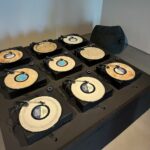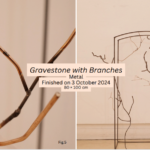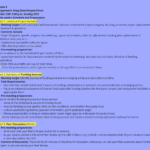(1)
Feedback recipient: Shumiao Cheng
Link: https://blogs.ed.ac.uk/s2630451_curating-2024-2025sem2/2025/02/10/reconsidering-time-in-curatorial-practice/#comments
Feedback content:
This blog explores the role of time in curatorial practice, particularly in relation to silence, layered narratives, and women’s experiences. It introduces different curatorial approaches, such as multi-channel video installations and interactive anonymous time billing, showing how curatorial work can challenge traditional viewing experiences and encourage audience participation.
I particularly appreciate the discussion on “silence as resistance.” Instead of framing individuals solely as “victims,” the exhibition emphasizes how trauma is carried through the body, emotions, and memory. This curatorial strategy avoids oversimplified emotional narratives and instead creates a more reflective and empowering space.
The section on “time as both a concept and material” is also very intriguing. Goliath’s four-channel video installation presents different women’s experiences of time, using juxtaposed narratives to allow the audience to engage with multiple perspectives simultaneously. This reminds me of how nonlinear time structures in curation can create more complex storytelling methods.
However, one aspect that could be explored further is how the audience experiences these shifts in time within the exhibition. For example, in the multi-channel video, how are the different screens coordinated? Are they synchronized or deliberately offset? How does this impact the viewer’s perception? Additionally, regarding the “anonymous time bill,” it would be helpful to have more details about how the audience interacts with this mechanism—do they record their time manually? Is there a real-time visual representation?
Overall, this blog effectively illustrates how curatorial practice can move beyond static displays to create more immersive and participatory experiences. Providing more insights into how audiences actively engage with the concept of time would make the discussion even richer.
(2)
Feedback recipient: Chuni Mao
Link: https://blogs.ed.ac.uk/s2706336_curating-2024-2025sem2/2025/02/02/week-3-%ef%bd%9c-mire-lees-open-wound-skin-boundaries-and-the-industrial-womb/
Feedback content:
This blog clearly explains the exhibition’s theme—the fragility and plasticity of life—and how people constantly change due to time, environment, trauma, and technology. The use of a non-linear narrative is an interesting curatorial choice, allowing visitors to engage through different senses (touch, sound, light, and shadow) rather than just observing.
The reference to Morton’s philosophy adds depth, and the key questions, such as whether plasticity means freedom or control, make the exhibition more thought-provoking.
However, the blog could give more details on how visitors interact with the exhibition. Can they influence the artwork? Does their participation change part of the exhibition? Also, how does the exhibition relate to real-life issues, such as trauma, healing, and the impact of technology on human identity? Addressing these aspects could make the exhibition more engaging and meaningful.
Overall, this blog presents a bold and experimental curatorial idea that combines various artistic forms and immersive experiences. Adding more details about audience interaction and connections to real-life issues would make the exhibition even more compelling.




